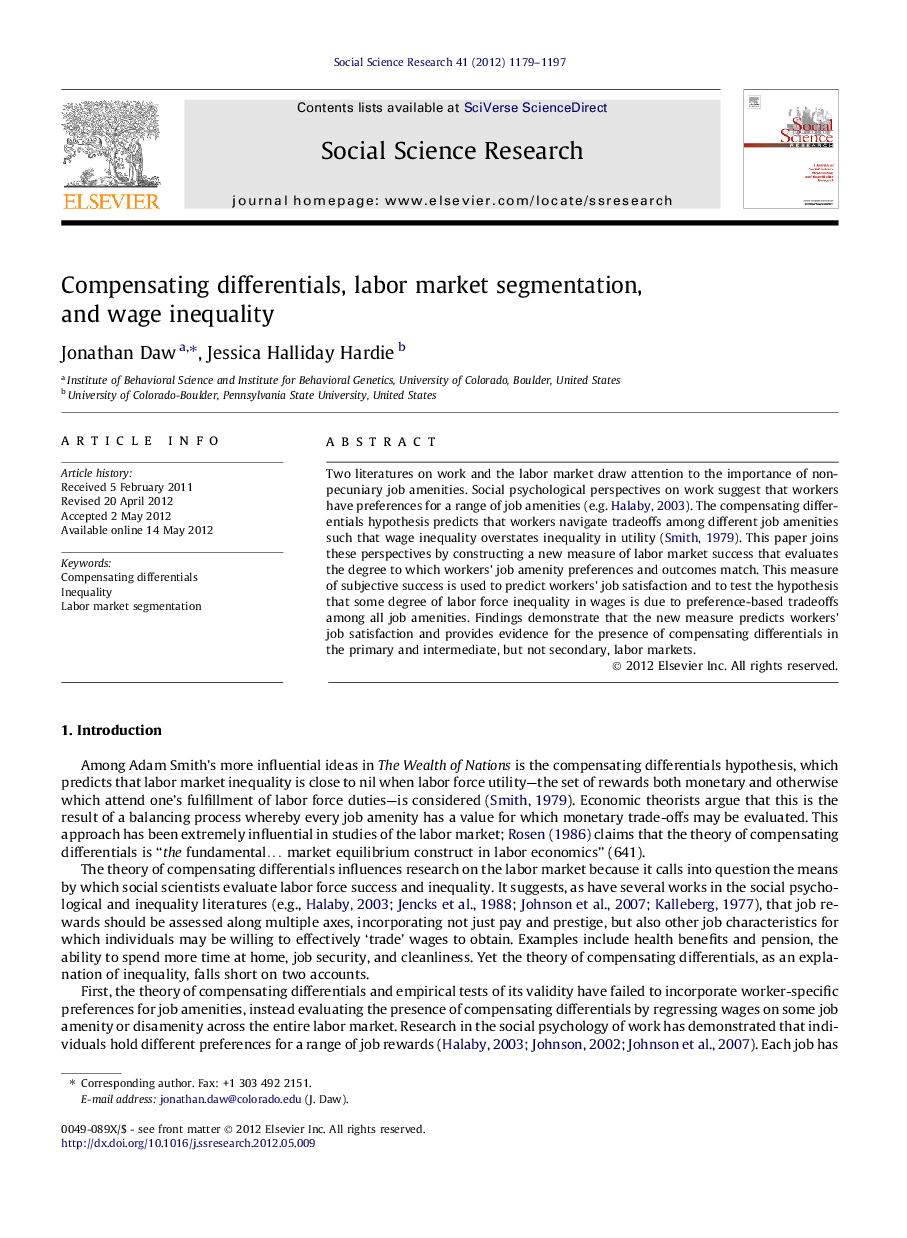| کد مقاله | کد نشریه | سال انتشار | مقاله انگلیسی | نسخه تمام متن |
|---|---|---|---|---|
| 955943 | 928301 | 2012 | 19 صفحه PDF | دانلود رایگان |

Two literatures on work and the labor market draw attention to the importance of non-pecuniary job amenities. Social psychological perspectives on work suggest that workers have preferences for a range of job amenities (e.g. Halaby, 2003). The compensating differentials hypothesis predicts that workers navigate tradeoffs among different job amenities such that wage inequality overstates inequality in utility (Smith, 1979). This paper joins these perspectives by constructing a new measure of labor market success that evaluates the degree to which workers’ job amenity preferences and outcomes match. This measure of subjective success is used to predict workers’ job satisfaction and to test the hypothesis that some degree of labor force inequality in wages is due to preference-based tradeoffs among all job amenities. Findings demonstrate that the new measure predicts workers’ job satisfaction and provides evidence for the presence of compensating differentials in the primary and intermediate, but not secondary, labor markets.
► Workers vary in their preferences and face tradeoffs between wages and other amenities.
► We test whether workers trade wages and amenities in line with their preferences.
► This is known as the compensating differentials hypothesis.
► Compensating differentials are found in the primary and intermediate labor markets.
► Compensating differentials are not found in the secondary labor market.
Journal: Social Science Research - Volume 41, Issue 5, September 2012, Pages 1179–1197